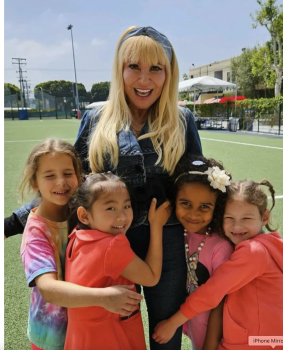Guiding Children: Welcoming Feelings, Shaping Behaviors
As parents, one of the most tender challenges we face is the storm of children’s emotions. Meltdowns, tears, laughter that turn into shrieks, it’s all part of being human. But for many parents, a worry bubbles up: If I let my child express their feelings, won’t they think anything goes?
Dr. Aliza Pressman, a psychologist and parenting expert, offers a phrase that captures this tension beautifully: “All feelings are welcome, all behaviors are not.” That simple statement became a turning point for me as an educator and parent coach.
It’s a truth worth holding onto, and one worth unpacking.

Why Feelings Need to Be Welcomed
Feelings are not “good” or “bad.” They’re signals. Sadness shows us what matters. Anger points to perceived unfairness. Joy reminds us what fills our cup. Children, especially, need to know that these inner experiences are safe to bring to the surface. When we accept feelings, we teach kids that they don’t need to hide or repress their emotions.
Research confirms this. Children who feel emotionally validated develop stronger regulation skills over time. They learn that feelings are temporary waves, they rise and fall, and you can ride them safely.
Where Behaviors Come In
Here’s the important distinction Dr. Pressman emphasizes: feelings are always valid, but behaviors need boundaries.
A child can feel furious that their sibling took a toy, that anger is real. But hitting the sibling is not okay.
When parents draw this line with clarity and compassion, children learn that boundaries exist not to squash who they are, but to keep everyone safe and connected. We’re saying: I see your anger. I understand it. And I’m going to help you express it in ways that don’t cause harm.
This balance allows kids to feel deeply without spiraling into fear of punishment or shame. They trust that their inner world matters, and that their actions have real impact.
The Parent’s Role: Modeling and Guiding
When we welcome feelings and redirect behaviors, we step into the role of guide rather than judge. Think of yourself as your child’s emotional coach. You’re not there to erase the storm, but to stand beside them as they navigate it.
That might sound like:
- “I can see you’re really sad that playtime is over. It’s hard to stop when you’re having fun.”
- “I hear how angry you are that I said no. It makes sense you’d feel that way. But yelling at me isn’t okay. Let’s take a breath together.”
- “Your excitement is bursting out! Let’s find a way to use that energy without running into the street.”
These responses show acceptance and guidance. Over time, your child internalizes this dual message: My feelings are safe. My actions matter.

What This Teaches Our Children
When we parent this way, we equip children with lifelong tools:
- Self-awareness They can name and understand their emotions.
- Self-regulation They learn strategies to manage intensity without harming themselves or others.
- Empathy and accountability They begin to see that others also have feelings, and their behavior impacts those around them.
This won’t erase conflict, but it will reshape it. A pause keeps your connection intact, even when emotions run high.

For Parents: A Gentle Reframe
It can feel counterintuitive, especially if we were raised in homes where emotions were dismissed or punished. But validating feelings doesn’t create permissive parenting, it creates confident children. The firm boundary is still there: all behaviors are not okay. What changes is the tone. Instead of control, we lead with connection.
Think of it this way: when your child feels understood, they are far more willing to accept limits. Connection fuels cooperation.

Closing Thought
Dr. Pressman’s words remind us of a simple truth: all feelings are welcome, all behaviors are not. As parents, our role is to carry that wisdom forward with warmth, structure, and guidance.
Our children’s emotions are not problems to solve, but invitations to connect. By welcoming the feelings and shaping the behaviors, we give them the gift of both freedom and structure. They learn that who they are inside is always safe with us, and how they act in the world can grow in ways that are kind, safe, and strong.
That balance, love and limits, acceptance and guidance, is where parenting does its deepest work.




